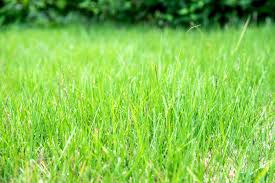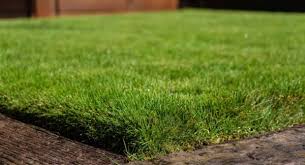Zoysia Grass (Zoysia japonica) is a native of Japan and Korea, and just like any other turfgrass out there, it is an invasive weed that is very aggressive in growth and can be found in green lands or coastal areas.
Grasses belonging to the zoysia family have been termed “Creeping Grasses”, due to their invasive and aggressive nature.
These kinds of grasses are popular in places like Asia as well as islands in the Pacific.
One interesting fact about this grass is that it can tolerate diverse variations in temperature and climate change.
Zoysia grass is mostly used on golf courses because of its ability to stop erosion on sloppy areas, they are also very good at repelling weeds and tend to choke other species of weed in the same domain.
Most individuals find this grass captivating because of so many reasons like their low growth habit which is why they are mostly used in football pitches and golf courses.
They are also soft and have a fine texture and helps in reducing cost in the area of hiring mowers to cut or reduce the grass due to its slow growth rate.
Read Also: Ways to Properly Dispose your Household Wastes
Facts About Zoysia Grass
1. In contrast to other invasive grass, zoysia grass generally require less fertilization and a high amount of water for its growth, they are also well known for their slow growth rate.
2. Unlike other invasive weeds also, this grass is less vulnerable to fungus damage and other damage caused by insects, although this depends on the environmental conditions.
3. They are mostly used in picnic areas and amusement parks due to their cushion-like surface nature.
Zoysia grass is a very important turfgrass that is widely used throughout the southern regions of the United States. They are difficult to cut down and the blade to be used for the clearing will need to be sharpened frequently. If you are interested in growing this invasive weed in your yard, then you should read on.
Zoysia grass can withstand heat and dry spells as they are warm-weather grass. They germinate and grow between the range of 14 to 21 days under good growing conditions.
Read Also: How to Recycle and Repurpose Plastic Items for Reuse
How To Plant Zoysia Grass

Below are detailed tips and steps on how you can go about planting this weed for your desired purpose:
1. Before you get started, you have to get a space large enough to grow your weed. By knowing the size of your land you can even determine how much soil, seed, and fertilizer you will need without running out of supplies in the long run.
2. It is highly recommended that you test your soil to know if it will be suitable for the grass or not before planting. They prefer and perform better in soils with acidity PH of about 6.0 to 6.5. After getting an area for your weed, you should check the soil to ensure they have the right PH.
3. Depending on the result of your soil test, you may have to add nutrients to your soil to reach the recommended PH level. You can achieve this by tilling the recommended amount of nutrients into your soil.
4. After performing the necessary steps in ensuring that the PH of your soil is balanced, then level the soil over the area you intend on using for growing your grass. During the leveling process, you may encounter debris such as stones band sticks, ensure you remove them, you can use a hard rake to break up large chunks of soil.
Read Also: Rhodes Grass (Chloris gayana Kunth) Complete Guide
5. With your soil bed prepared, you can simply use a seed spreader if you have one, to cast your zoysia grass seed across your garden. Make sure you spread the right amount of the zoysia grass seed, as too much of it can cause a low germination rate.
Note: Ensure that the seeds have soil contact properly and don’t bury them under the soil, as this seed requires sunlight for germination. Under ideal growing conditions, it will take between 14 to 21 days to germinate and during this time, ensure that you keep the soil consistently moist.
Despite the good facts about zoysia grass plugs or the zoysia grass sod, some people still dislike this weed and even sometimes compare between zoysia grass vs bermuda. Some of the zoysia grass types include the zenith zoysia grass seed (zenith zoysia grass), the empire zoysia grass, the zeon zoysia grass, etc.
How to Get Rid of Zoysia Grass

The grass is an invasive weed and it is very hard to get rid of it.
If you have zoysia grass and you don’t like it, you can simply hire mowers to cut it down for you, but due to the cost, you might want to do it yourself.
If you intend on doing this yourself, then expect to do some digging and slicing of the grass, but it is highly recommended you get mowers who specialize in the job to do it for you.
As mentioned earlier, zoysia grass is considered an invasive weed and is known to take over lawns, that is to say when zoysia grass grows in a particular place for a longer period they tend to invade other grasses existing in that same area.
Zoysia grass will choke out weeds, because of their invasive nature, mixing them with other species of weed will not only crowd other grasses but will also out-compete other grasses in the same domain.
How To Identify Zoysia Grass In Your Lawn
With the following characteristics of zoysia grass listed below, you should be able to identify a zoysia grass in your lawn:
1. They thrive in sunny conditions
2. Low maintenance and high water requirement
3. Best for southern zones
4. They resemble Kentucky bluegrass
5. They can tolerate heat
6. They are invasive, thick, and creeping.
Read Also: The Ultimate Step-by-Step Guide to Vegetable Gardening
